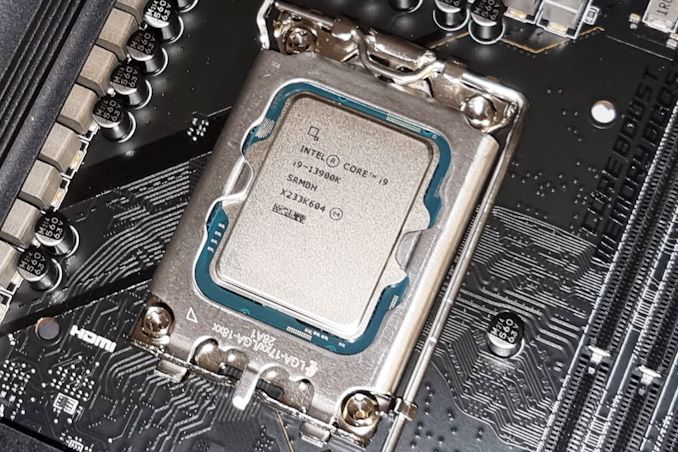
A Lighter Touch: Exploring CPU Power Scaling On Core i9-13900K and Ryzen 9 7950X
One of the biggest running gags onsocial media and Reddit is how hot and power hungry CPUs have become over the years. Whereas at one time flagship x86 CPUs didn't even require a heatsink, they can now saturate whole radiators. Thankfully, it's not quite to the levels of a nuclear reactor, as the memes go– but as the kids say these days, it's also not a nothingburger. Designing for higher TDPs and greater power consumption has allowed chipmakers to keep pushing the envelope in terms of performance – something that's no easy feat in a post-Dennard world – but it's certainly created some new headaches regarding power consumption and heat in the process. Something that, for better or worse, the latest flagship chips from both AMD and Intel exemplify.
But despite these general trends, this doesn't mean that a high performance desktop CPU also needs to be a power hog. In our review of AMD's Ryzen 9 7950X, our testing showed that even capped at a these days pedestrian 65 Watts, the 7950X could deliver a significant amount of performance at less than half its normal power consumption.
If you'll pardon the pun, power efficiency has become a hot talking point these days, as enthusiasts look to save on their energy bills (especially in Europe) while still enjoying fast CPU performance, looking for other ways to take advantage of the full silicon capabilities of AMD's Raphael and Intel's Raptor Lake-S platforms besides stuffing the chips with as many joules as possible. All the while, the small form factor market remains a steadfast outpost for high efficiency chips, where cooler chips are critical for building smaller and more compact systems that can forego the need for large cooling systems.
All of this is to say that while it's great to see the envelope pushed in terms of peak performance, the typical focus on how an unlocked chip scales when overclocking (pushing CPU frequency and CPU VCore voltages) is just one way to look at overall CPU performance. So today we aregoing to go the other way, and to take a look at overall energy efficiency for users – to see what happens when we aim for the sweet spot on the voltage/frequency curve. To that end, today we're investigating how the Intel Core i9-13900K and AMD Ryzen 9 7950X perform at different power levels, and to see what kind of benefits power scaling can provide compared to stock settings.
The Ever Changing Definition of TDP (Thermal Design Power)
One of the most frustrating talking points surrounding processors involves TDP, or more specifically, what TDP even is. While the term has a fixed definition – Thermal Design Power – what that actually means in regards to the specifications of a product varies from one hardware maker to the next. Even Intel and AMD have slightly different definitions of TDP (despite sharing the x86 CPU market), which makes it a complicated and at-times confusing term. In short, TDP is no longer an unflinching guide to the maximum power consumption from a specific processor – or even how much heat energy can dissipate from a processor
This is is a matter we have given plenty of column inches to over the years, so below are some previous articles on the subject of power and TDP:
- Why Intel Processors Draw More Power Than Expected: TDP and Turbo Explained
- Talking TDP, Turbo, and Overclocking: An Interview with Intel Fellow Guy Therien
Starting with Intel, while the company assigns official TDP figures to its processors, the reality is that their unlocked processors are not limited to one assigned power figure. At best, Intel offers a set of TDP values based around the base frequency of their chips, while power level 1 (PL1) and power level 2 (PL2) ratings are laid on top of that to define the power parameters for those all-important (and all-advertised) turbo clock speeds.
Meanwhile, looking at how AMD defines its TDP figures has been made more difficult with the release of its Ryzen 7000 series processors and the accompanying AM5 platform. While AMD does give out default TDP figures the Ryzen 7000 series, this is no more a hard ceiling than it is with Intel; the other element is what AMD calls Package Power Tracking, or PPT for short. The defined TDP value is assigned to its processors based on default frequency levels, while PPT is defined as the limitation to what the actual socket can deliver in terms of power (and what flagship chips tuned for maximum performance will try to consume).





































































